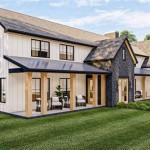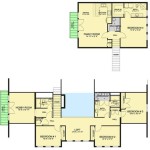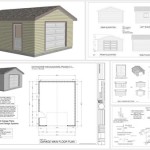Floor Plans for Single-Story Homes: A Comprehensive Guide
Single-story homes are becoming increasingly popular due to their accessibility, affordability, and ease of maintenance. These homes offer a comfortable and practical living experience, especially for families with young children or aging individuals. A well-designed floor plan is crucial for optimizing space and functionality within a single-story home. This article provides a comprehensive guide to understanding floor plans for single-story homes, exploring different layout options, and highlighting key considerations for selecting the ideal plan for your needs.
Understanding Floor Plan Basics
A floor plan is a scaled drawing that represents the layout of a house, showing the arrangement of rooms, walls, doors, windows, and other features. It provides a visual representation of the home's spatial organization and flow. Understanding the basics of floor plan symbols is essential for interpreting and evaluating different options. Common symbols include:
- Walls: Solid lines represent interior and exterior walls.
- Doors: Doors are typically depicted as rectangles with a swing arc indicating the direction they open.
- Windows: Windows are represented by rectangles with dashed lines or a specific window symbol.
- Dimensions: Numerical values indicate the length and width of rooms and features.
Floor plans are typically drawn to scale, allowing accurate measurements and comparisons between different plans. This is important for visualizing furniture placement, traffic flow, and overall functionality.
Popular Floor Plan Layouts for Single-Story Homes
Single-story homes offer a variety of layout options to suit diverse lifestyles and preferences. Here are some popular and widely-used floor plan layouts:
- Open Concept: Open-concept plans feature a large, interconnected living, dining, and kitchen area, creating a sense of spaciousness and flow. This layout is ideal for entertaining and fostering family interaction.
- Split-Level: Split-level designs incorporate a slight elevation change within the single story, often separating the living area from bedrooms or a den. This layout offers privacy and distinct zones for different activities.
- L-Shaped: L-shaped floor plans create a defined living area and a separate wing for bedrooms and bathrooms. This design provides a sense of balance and separation while offering flexibility in room placement.
- U-Shaped: U-shaped layouts feature a central hallway connecting multiple rooms, creating a sense of privacy and seclusion. This layout is often used for larger homes with multiple bedrooms and bathrooms.
- Ranch-Style: Ranch-style homes are characterized by a long, rectangular layout with a focus on functional spaces. These plans typically feature a large living area, bedrooms grouped together, and a spacious kitchen.
Important Considerations for Choosing a Floor Plan
When selecting a floor plan for a single-story home, several crucial factors should be considered:
1. Lifestyle and Needs
The floor plan should cater to your lifestyle and individual needs. Consider the number of bedrooms and bathrooms required, whether you need a large living area for entertaining or a dedicated office space, and any specific features you desire, such as a covered patio or a spacious kitchen.
2. Site and Orientation
The size and shape of your lot, as well as its orientation, influence the best floor plan options. Take into account factors like sunlight exposure, privacy concerns, and existing trees or landscape features.
3. Budget and Cost
Floor plans vary in size and complexity, which directly impact construction costs. Determine your budget and prioritize features that are essential to you. Consider the potential for future expansion or modifications, as this can influence your long-term expenses.
4. Functionality and Flow
A well-designed floor plan ensures efficient use of space and promotes a smooth flow between rooms. Evaluate the layout's practicality, such as the proximity of the kitchen to the dining area, the location of bedrooms near bathrooms, and the accessibility of outdoor spaces.
5. Aesthetics and Style
The floor plan should align with your personal aesthetic preferences. Consider the overall style of the home, including the exterior design, interior finishes, and landscaping. Choose a plan that reflects your taste and complements the overall architectural design.

Must Have One Story Open Floor Plans Blog Eplans Com

Pin On Homes

Unique One Story House Plans Monster
Must Have One Story Open Floor Plans Blog Eplans Com

Elegant One Story Home 6994 4 Bedrooms And 2 Baths The House Designers Plans Floor

One Story House Plan Examples

Small One Story 2 Bedroom Retirement House Plans Houseplans Blog Com

40 X 55 2 200 Sf One Story House Plan The Escape

Stylish One Story House Plans Blog Eplans Com

Floor Plan 5 Bedrooms Single Story Five Bedroom Tudor House Plans Dream








